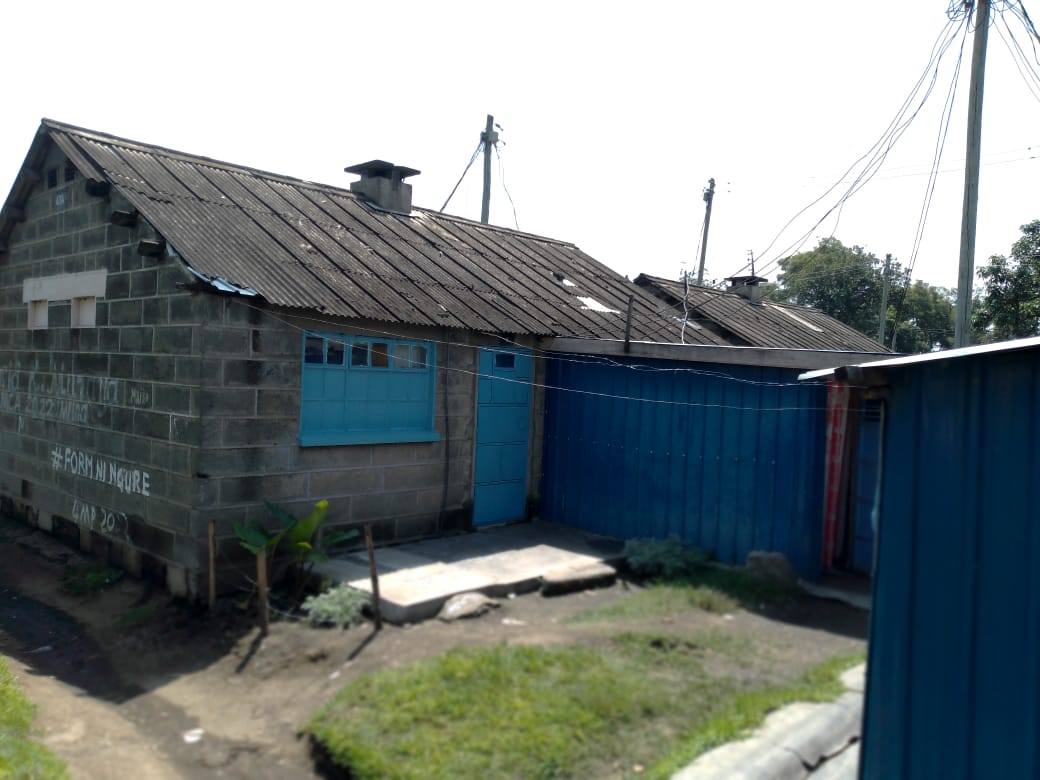

Over 800 families residing in two of the oldest and largest estates in Nakuru have a reason to smile after the County government moved in to replace the poisonous asbestos roofing materials on their houses.
The families living in Kivumbini and Flamingo Estates, which house low-income earners, have started to benefit from the multi-million programme that is expected to end within the next four months.
Lands, Physical Planning, Housing, and Urban Development County Executive Committee Member (CECM) John Kihagi said that already over 60 per cent of the housing units owned by the County across the 11 Subcounties have had the roofing material changed.
The CECM explained that the replacement of the hazardous asbestos roofing with galvanized iron sheets was aimed at mitigating severe health risks associated with exposure to the material.
Kihagi further said that the County government had set aside funds for the exercise after it was proven that the roofing material could cause chronic ailments including cancer.
“The leaking, decayed and asbestos-laden roofing will be replaced with modern roofing that will give the estates an improved aesthetic appearance and significantly improve the entire infrastructure in the targeted areas,” stated the CECM.
He said the initiative to replace asbestos roofing was aligned with Governor Susan Kihika’s manifesto and her administration’s health agenda, which emphasises safeguarding the well-being of the residents and promoting improved and dignified livelihoods.
Kivumbini and Flamingo were built in the 1950s by the colonial administration along with other estates like Baharini, Paul Machanga, Mohammed Kahero, Ojuka, Kaloleni and Shauri Yako among others at a time when the town’s population was low.
In the good old days, the estates were the most sought-after residential areas for low-income earners.
Though Kenya banned the use of asbestos in 2006, most state-owned and county government residential quarters built in the 1950s and 1960s have remained with asbestos roofs.
Close to a century ago, asbestos was widely used around the world because it was an ideal material. It did not burn, rot, or corrode, it was an excellent thermal and acoustic insulator, and it possessed elasticity and tensile strength.
On disposal, Kihagi underscored the importance of proper disposal of the asbestos materials, warning that the material should not be used after its removal.
He said galvanised iron sheets would enable the residents to harvest rain water, adding that they had instructed the county enforcement department and contractors to ensure that all removed asbestos materials were surrendered to the county depot for safe disposal.
The Government banned asbestos after medical studies indicated that it could cause asbestosis, a lung disease resulting from the inhalation of asbestos particles.
According to medical practitioners, inhaled asbestos fibres aggravate lung tissues, which cause them to scar. Symptoms of asbestosis include shortness of breath and a dry crackling sound in the lungs while breathing. In its advanced stages, the disease is said to cause cardiac failure and cancer.
Across the globe, as of January 2014, fifty-five countries, including the US, New Zealand, Australia and Egypt had banned the use of asbestos as a roofing material with an additional 16 placing restrictions on its use.
Despite the ban on the use of asbestos in Kenya in 2006 and the associated increase in cancer cases, the material is still in use in water piping systems and roofs in many parts of the country.
Regulations by the National Environment Management Authority (NEMA) on asbestos disposal provide that it should be buried in the ground and encased in cement to prevent it from seeping into the ground and contaminating the soil and possibly water aquifers.
Kihagi asked private investors to take workers renovating old buildings with piping and roofing asbestos materials through training on how to handle the waste and put precautions in place to ensure that members of the public are safe from disposed asbestos products.
He urged contractors working on both public and private projects to ensure that they follow all NEMA regulations and specifications in disposing of the asbestos waste.
Legal Notice No.121 of the Environmental Management and Coordination (Waste Management) Regulations classifies waste containing asbestos as hazardous waste. In addition, the Legal Notice requires that hazardous waste be disposed of in a specified manner as approved by NEMA.
From the 1940s to the 1970s, the construction industry preferred asbestos materials because they were cheaper, lighter, and easier to install. Additionally, asbestos does not corrode under chemical exposure — it is fire resistant and a poor heat and electricity conductor, thus a preferred insulator.
Asbestos is also a versatile material that finds use in various construction aspects, such as soundproofing, ceilings, tiles, and insulation materials, among others.
However, Studies show that asbestos breaks down into toxic microscopic fibres, and people living under them inhale and ingest the particles. Inhaled asbestos particles can cause lung cancer, mesothelioma (a scarring of lung tissue), and other upper respiratory tract infections.
Kihagi, however, assured that the devolved unit’s administration was mapping out regions where asbestos products were still in use.
While affirming that the County Government was committed to collaborating with institutions, contractors and individual developers in the safe disposal of asbestos materials, Kihagi said Nakuru was leading by example as it had eliminated the deadly roofing materials in over 70 percent of its public institutions, such as schools and housing estates.
The Nakuru Water Sewerage and Sanitation Company (Nawassco) is also replacing the old water piping systems that were put up in the 1950s and 1960s that still use asbestos pipes.
The WHO reports that approximately 125 million people in their workplaces and homes are exposed to asbestos.
The International Labour Organization estimates that over 100,000 lives are lost annually from asbestos-related complications. Asbestos roofing has been named as one of the leading causes of lung and stomach cancer in the world.
A 2006 study by the International Conference on Health, Environment and Justice, revealed that asbestos dust can easily travel through the air into the water supply system, while cancer researchers reveal that working in old buildings with ageing and decomposing asbestos materials can increase the risk of lung cancer.
Nevertheless, in Kenya, asbestos roofing sheets are still in use on numerous private homes, various government institutions, including police stations, hospitals, universities, education centers, as well as coffee and tea estates, and county government offices.



















